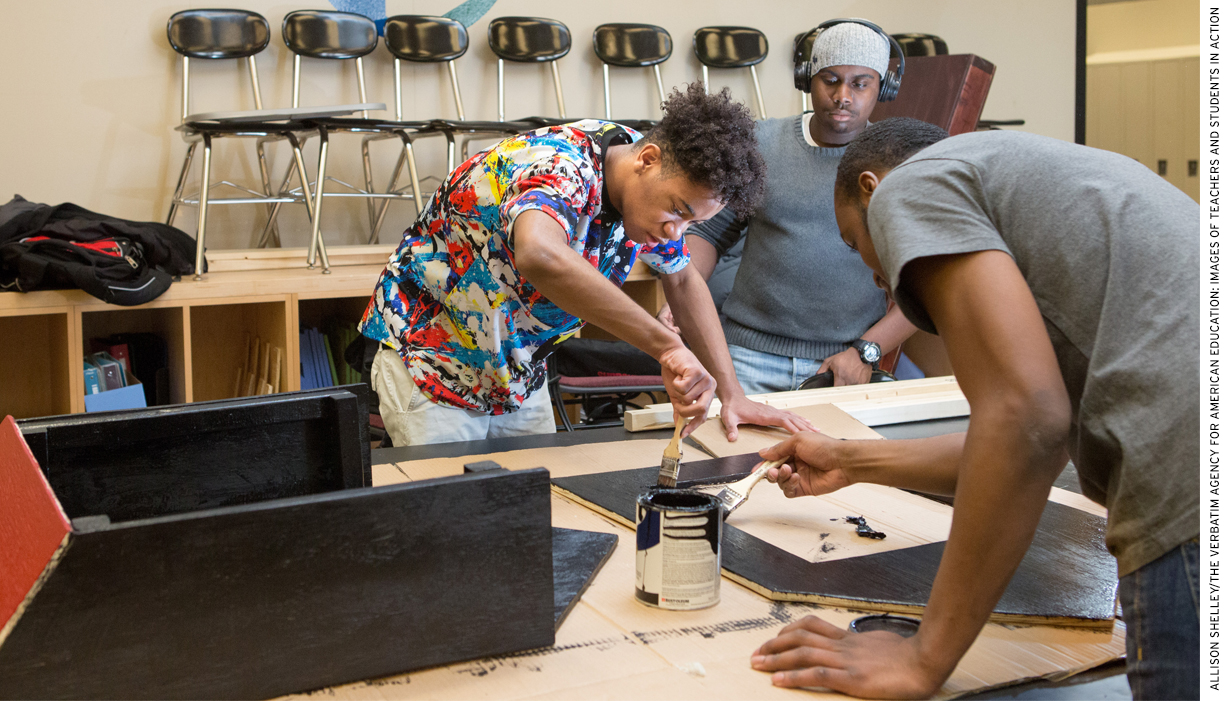
What does it mean for students to be “career ready”? It should mean they’re prepared to enter the workforce with the knowledge and skills they need to thrive, ideally in fields that pay enough to support a family. But too often career-preparation programs fail to live up to their name.
Many of today’s CTE students learn skills that are no longer relevant, or they obtain credentials that don’t matter to employers. The result for students can be dead-end jobs and unemployment. For employers, it can mean shortages of qualified workers, diminished productivity, and underperforming regional economies.
Partnerships between those providing education and those providing jobs are key to addressing the problem. If we want CTE programs to prepare future employees for success in the workplace, it’s critical that employers play a role in preparing these future employees.
Employer involvement in CTE programs is not a novel concept. In countries like Switzerland and Germany, where CTE students often combine work-based learning with classroom study, employers play a central role by providing financial resources and helping to ensure curricula reflect the state of the art in the workplace.
American CTE programs, in contrast, are often designed without employers’ input, resulting in many programs that aren’t aligned to industry needs and that don’t offer paid, work-based learning opportunities.
Thankfully, there are bright spots in the evolving landscape of American career and technical education, places where innovative, forward-thinking leaders are working closely with business and industry to prepare students for the jobs of tomorrow. Chiefs for Change, a bipartisan network of state and district education leaders, recently released a report, Let’s Get to Work: Learning From Success in Career and Technical Education, highlighting innovative efforts to modernize CTE programs in Nevada, Denver, and San Antonio, among other places.
When the 2008 economic recession hit Nevada, jobs in the state’s entertainment and gambling industries dwindled. In response, state leaders, including former State Superintendent of Public Instruction Steve Canavero, came together to create a “New Nevada” by diversifying the state’s economy.
A cornerstone of the effort is a plan to improve CTE, since many new jobs would require a credential, training, or certification, but only half would necessitate college degrees. The state began evaluating existing CTE programs, expanding work-based learning opportunities, and developing new pathways in consultation with business and industry. Today, students prepare to work in Nevada’s “new” economy through 79 programs in six career clusters, in fields ranging from computer science and cybersecurity to local trades like mining and tourism.
In Denver, former superintendent Tom Boasberg worked with local industry to develop one of the nation’s most robust work-based learning models as part of Denver’s CareerConnect. Modeled on similar programs in Switzerland, Singapore, and Germany, Denver’s approach provides students with paid apprenticeships in high-growth and high-demand industries such as financial services, healthcare, and information technology.
One key to Denver’s success is its close collaboration with CareerWise Colorado, a statewide intermediary organization dedicated to building bridges between employers and CTE providers. It’s a win-win relationship: business and industry shoulder much of the cost, as employers pay students. In exchange, employers get a return on their investment through the value of apprentices’ work, reduced turnover costs, and the development of a talent pipeline of skilled and loyal workers.
In San Antonio, Superintendent Pedro Martinez and his team are working to create a series of “on-ramps and off-ramps,” permitting students to move seamlessly between school and meaningful work on a student-designed path, with opportunities to “upskill” or return to postsecondary education when appropriate. San Antonio has expanded dual-credit opportunities and created new career-themed high schools. One example is CAST Tech, which has an advisory board of local employers and, through industry partnerships, guarantees students mentoring and internships. Today, more than 700 students within the district are enrolled in dual-credit coursework aligned with opportunities in local industries.
The recently reauthorized federal law known as Perkins V calls for an expansion of work-based learning and better alignment of CTE programs with employer needs. The innovative initiatives underway in places like Nevada, Denver, and San Antonio suggest those goals are achievable.
Ramin Taheri is director of advocacy and policy at Chiefs for Change.
This piece originally appeared on the FutureEd website. FutureEd is an independent, solution-oriented think tank at Georgetown’s McCourt School of Public Policy. Follow on Twitter at @futureedGU


